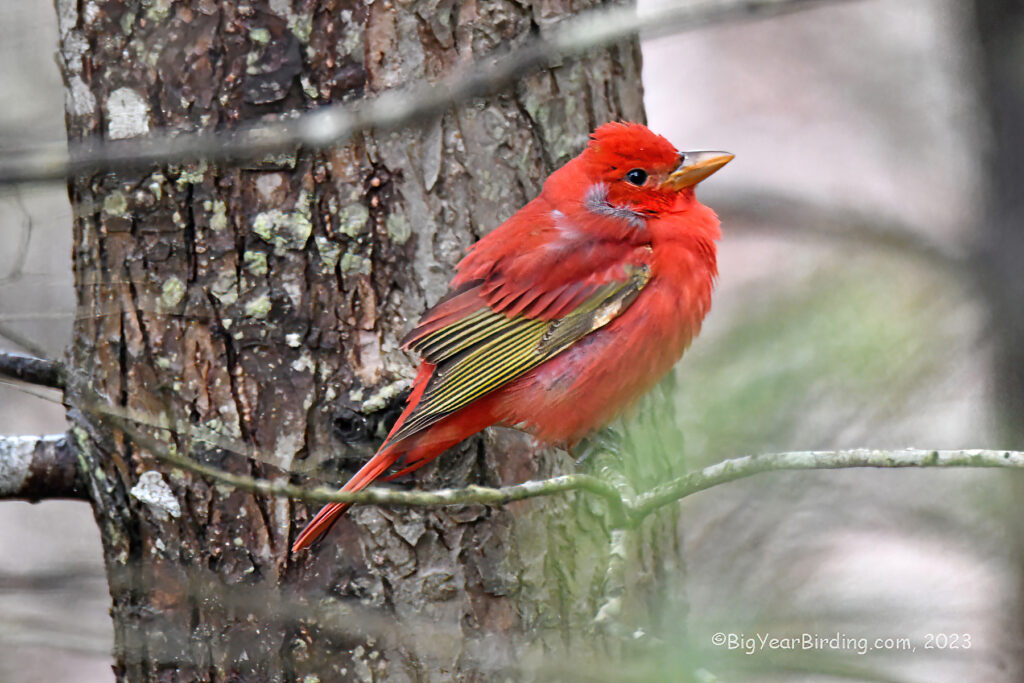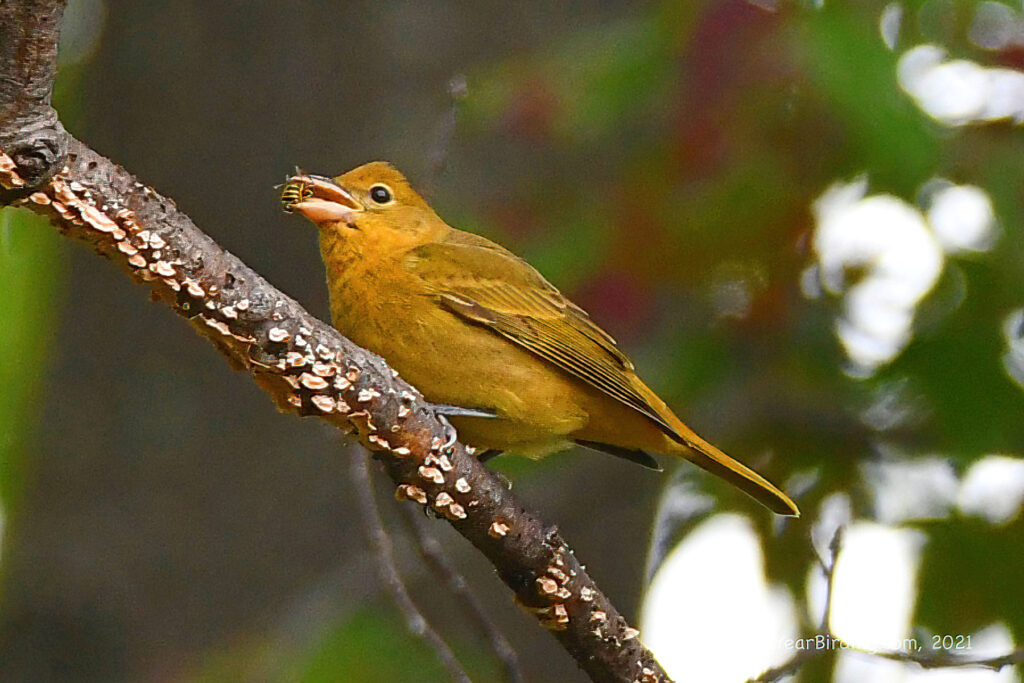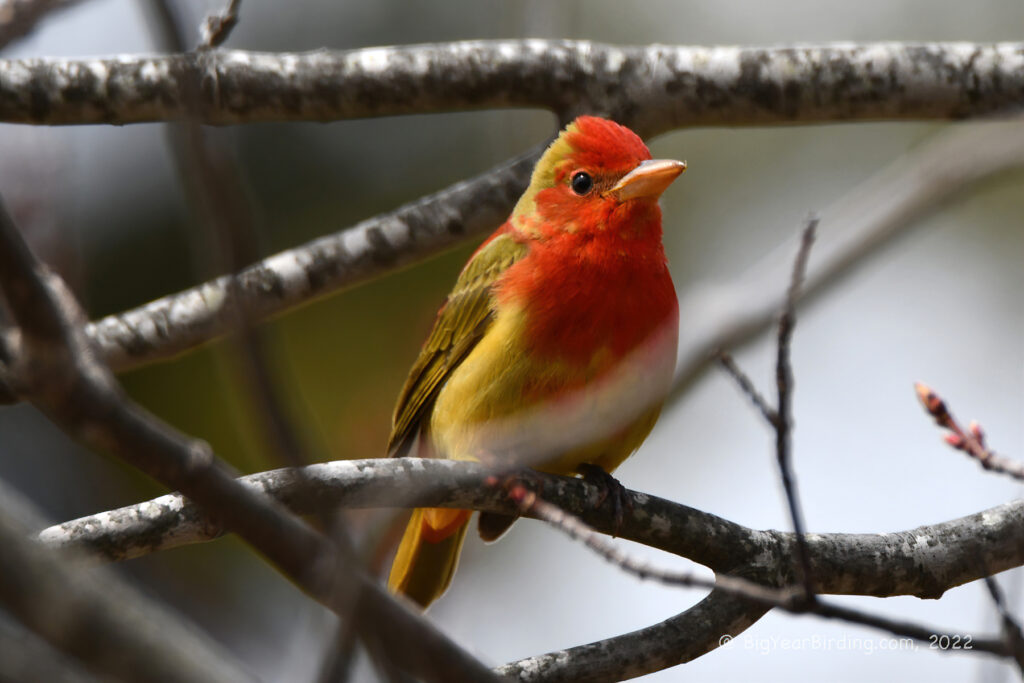
The Summer Tanager (Piranga rubra) is a medium-sized songbird measuring approximately 7.5 inches in length and weighing around 0.9 ounces. The male Summer Tanager is one of the most striking birds found in North America, with its bright red plumage that extends to the wings and tail, contrasting with a black bill and eyes. Females, on the other hand, have yellow-greenish upperparts and olive-yellow underparts, with a darker bill and eyes.
During the breeding season, Summer Tanagers can be found throughout much of the southeastern United States and into Mexico, Central America, and northern South America. They prefer forested areas with open canopies, such as oak-hickory woodlands, pine forests, and riparian corridors. In the winter, Summer Tanagers migrate to Central and northern South America, where they can be found in similar habitats.
One distinguishing characteristic of the Summer Tanager is its unique song. Males can be heard singing a distinctive, short, and musical phrase consisting of a high-pitched, down-slurred whistle. During migration, they also produce a harsher, more nasal call note that is used for contact calls between individuals.
Another interesting fact about the Summer Tanager is that it is one of the few bird species in which the females are more likely to sing than the males. Females often sing from the nest, perhaps to communicate with their mates or to warn off predators.
While the Summer Tanager is not considered globally threatened, its population has declined in some areas due to habitat loss and fragmentation. As such, conservation efforts are being made to protect its breeding and wintering habitats. Birdwatchers and nature enthusiasts can help support these efforts by participating in citizen science projects and supporting conservation organizations.

In summary, the Summer Tanager is a medium-sized songbird that is known for its bright red plumage in males and yellow-greenish plumage in females. They are found in forested areas throughout much of the southeastern United States during the breeding season and migrate to Central and northern South America during the winter. Their unique song and the fact that females are more likely to sing make them an interesting species to observe and study. However, habitat loss and fragmentation pose a threat to their population, emphasizing the importance of conservation efforts.

